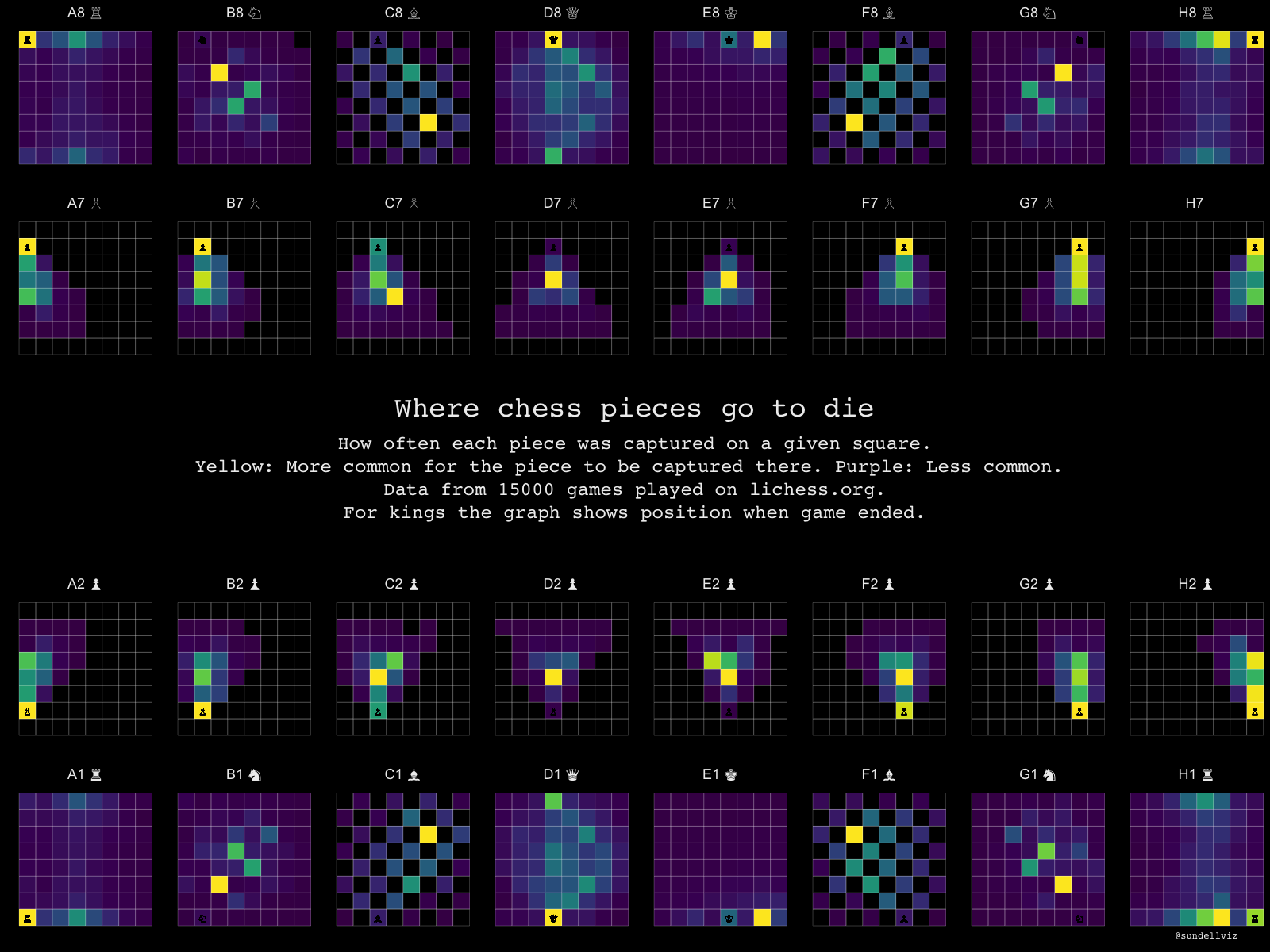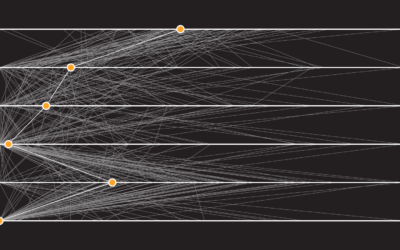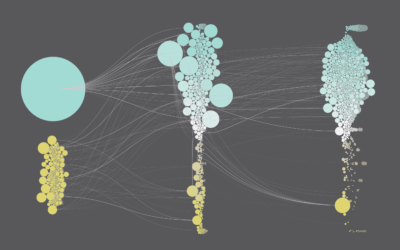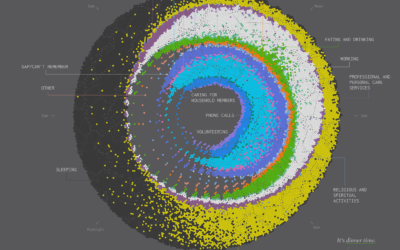Where chess pieces are most often captured

Reddit user desfirsit made heatmaps to show where on the chess board pieces are usually captured. The top two rows are for black pieces, and the bottom row is for white pieces.
I’m no chess player, but this seems to look right? The frequency of captures appears to agree with movement patterns. Although I’m surprised that the queen, despite having the most freedom of movement, is often captured in the same place. But like I said, I’m no chess player.
You can grab the data from Lichess, which provides data for millions of chess games.
Become a member. Support an independent site. Make great charts.
See What You Get





